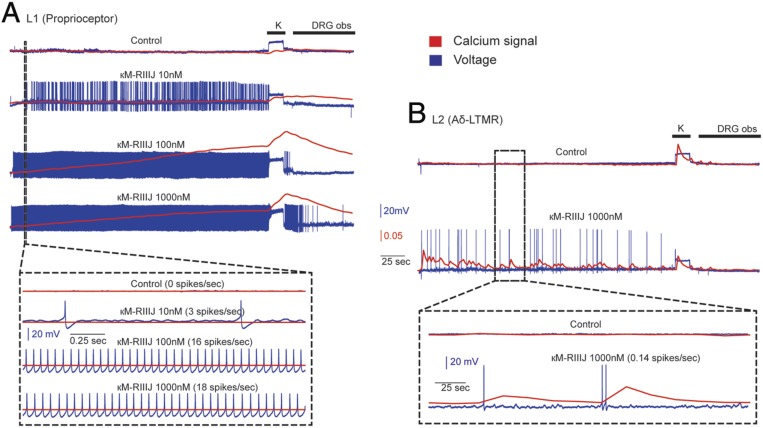Fig. 4.
Simultaneous calcium imaging and intracellular recording. (A) L1 neurons (proprioceptors) respond to κM-RIIIJ with a train of APs. At 10 nM, κM-RIIIJ induced a sparse spike train and did not result in a robust calcium signal; higher concentrations of the drug resulted in increases in spike rate, decreases in first spike latency, and a smooth continuous rise in calcium signal. (B) L2 Aδ-LTMRs showed sparse bursts of APs and a lower spike rate than proprioceptors. Unlike proprioceptors, calcium signal in response to the drug-induced APs was jagged; each spike resulted in an almost quantal influx of calcium, and multiple spikes in short intervals resulted in summation of calcium influx. DRG obs, DRG observation solution.

